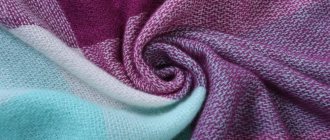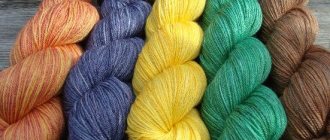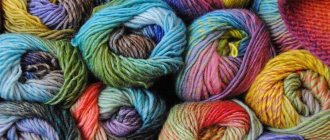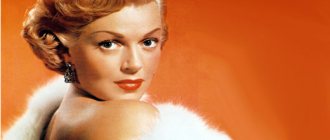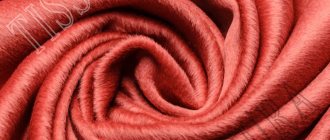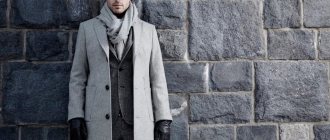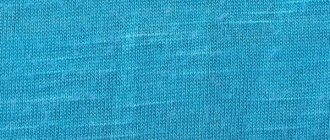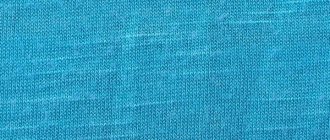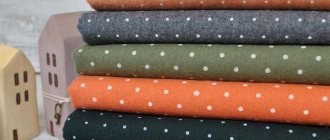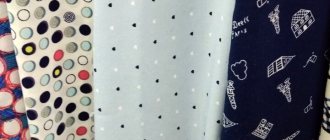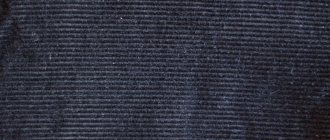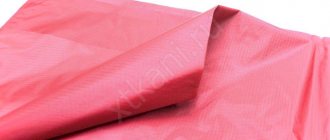History of fabric
Acrylic is a young fashionable fabric. The technology for producing artificial matter from gas was invented in America in the mid-20th century. In the laboratories of the large chemical company DuPont, for a long time, new types of fibers were developed, close in structure and properties to natural threads.
The predecessor of acrylic was the soft fluffy fabric orlon, reminiscent of wool. The only downside was its uneven coloring. In the process of improving the material, scientists invented a method of coloring the material in the melt. The resulting fibers acquired the name acrylic. The international name for acrylic fabric is PAN.
What and how is acrylic fiber obtained from?
The discovery of a new substance, polyacrylic, occurred in the 40s of the last century and was closely connected with the oil and gas industry. The main credit for the development goes to the American chemical concern DuPont. The chemists who worked within the walls of this company were the first to synthesize acrylonitrile, a polymer of viscous consistency from which smooth and elastic threads could be drawn. Polyacrylic has several synonyms, these are:
Acrylic fiber is a mixture of acrylonitrile and a comonomer that is added to facilitate dyeing and processing. Polyacrylic fiber is produced in two different ways: wet and dry spinning. Acrylic threads can be used alone or together with other natural and synthetic threads. If the fabrics contain polyacrylic, then on the label you can see the Latin abbreviation PA, which is a shortened version of the word polyacryl.
How it is produced
Acrylic is produced by spinning a continuous filament from natural gas. The creation process is a sequence of complex chemical reactions.
Hydrocyanic acid and acetylene are separated from the gas. The elements polymerize and turn into fiber. Acrylic is painted in a liquid state. The threads are dyed from the inside. Because of this, the color of acrylic is durable and the coloring is uniform. The fabric pattern is clearly visible on the smooth surface.
Photo source: Depositphotos.com
To create a canvas from acrylic fibers, a variety of weaving techniques are used: knitted weaving, jacquard weaving, matting, plain weaving. Fabrics have different textures and differ in appearance.
Application
- Warm clothes for children and adults are made from acrylic material : jumpers, sweaters, sweaters, jackets, light coats.
- Blended acrylic is suitable for sewing linen and casual wear : trousers, skirts, dresses, blouses.
- Acrylic is suitable for sewing sports suits and swimsuits .
- The material is used to create accessories : hats, mittens, gloves, scarves, children's shirtfronts.
- Acrylic is suitable for sewing home textiles : bedspreads, rugs.
- Curtain acrylic is used to create curtains , does not fade under the bright rays of the sun, drapes beautifully, and allows you to create fixed folds.
- Acrylic fabrics are used to create awnings, transport covers, and awnings .
- In the advertising industry, acrylic canvas is used in the production of banners and streamers.
- The inclusion of reinforcing threads in the material allows the use of acrylic as furniture upholstery .
- Acrylic fibers are used to produce knitting yarn . It is used in hand and machine knitting, fits well into the fabric and does not delaminate. Suitable for knitting clothes and toys.
Acrylic fibers undergo strict sanitary and hygienic control; they are safe and harmless to health, suitable for making clothes even for small children.
Conclusion
The slogan “all natural is the best” once again confirmed its validity.
Despite the successes of the chemical industry, wool natural materials are not going to lose their position in production. However, if their positive properties are enhanced by the advantageous characteristics of acrylic, materials are obtained that best meet the needs of the consumer and combine the advantages of wool and acrylic fibers. This is confirmed by the growing popularity of mixed fabrics along with pure wool.
How to wash a suede jacket at home
Is it possible to wash a suede bag?
Description of the fabric: properties and composition
Acrylic is called artificial wool; according to its characteristics, it can replace and sometimes surpass natural wool.
Acrylic fibers are highly durable and can withstand exposure to chemicals, acids and solvents.
Acrylic fabric can be painted in any tone, from bright to soft pastel. The colors always turn out rich and rich.
According to color options, acrylic is divided into:
- plain;
- printed - a pattern is applied to the surface; it can be a wide or narrow strip, a floral print, or a geometric pattern.
Photo source: Depositphotos.com
The percentage of acrylic fibers in the fabric ranges from 5% to 100%. Pure acrylic without additives is rare. To improve performance characteristics, it is combined in different proportions with natural fibers: wool, mohair and cotton. It is possible to combine acrylic with viscose or synthetics.
The most popular combination is acrylic and wool. Things turn out warm, soft, not itchy, and keep their shape well. The ideal ratio is 30% acrylic and 70% wool.
How to wash wool and acrylic items
Any knitted items require delicate washing. And nothing more delicate than hand washing has yet been invented. So we'll start with advice on how to wash such items by hand.
For a wool or acrylic sweater, the plan is as follows:
- turn the clothes inside out;
- fill the basin with water. The optimal temperature is 25-30°C. Do not make the water too cold or hot, because this can cause the item to shrink (this applies not only to sweaters, but also to hats and socks);
- There is no need to sprinkle the powder on the item itself; just dilute it in water. You can use a special detergent for woolen items or baby shampoo;
- briefly soak the sweater in water (5-8 minutes), then wash with gentle movements;
- don't twist things! Wring it out, fold it in half, and then lay it on a terry towel to dry.
ru.depositphotos.com
If you don’t have time for all this, put the sweater in the washing machine. Don’t forget to put it in a washing bag, set the temperature to no more than 30°C, and the number of revolutions to no more than 500. Be sure to use fabric softener to prevent pilling from appearing, and you can also wash it with an antistatic agent, so that after wearing it recently washed sweater without looking like a dandelion.
By following these rules, you will keep your clothes in order, and nothing will prevent you from wearing a soft and warm sweater for a long time on cold winter-spring days.
Advantages and disadvantages
Acrylic has many positive properties :
- softness, pleasant to the touch;
- ability to retain heat well;
- quick drying;
- UV resistance, bright, even color does not fade in the sun;
- elasticity;
- hygiene, the ability to resist the growth of mold, bacteria, parasitic insects;
- stability of shape and color, products wrinkle little, do not shrink, and do not fade with repeated washing;
- hypoallergenic.
Pros of acrylic
- Price. A noticeable difference in cost compared to things made from natural fibers. Low price is achieved by ease of manufacture.
- Wear resistance. An important quality for clothing. Acrylic fabric is quite durable and is often used in the manufacture of specialized clothing and other technical fabrics.
- Resistant to direct sunlight and easy to clean.
- The fabric dries quickly after washing and does not lose its original size.
- Hypoallergenic material. Warm and soft to the skin. Added to children's clothing.
- A large number of colors of fabrics made from this material.
- Rot-resistant fabric with excellent elasticity.
- There will be no moths or any other insects in the items.
Care instructions
- Acrylic products that are constantly worn require frequent washing. It is recommended to wash them 1-2 times a week to avoid heavy soiling.
- It is better to wash by hand in water at room temperature. Machine washable in a delicate cycle using a mild conditioner, water temperature should not exceed 30 degrees.
- When spinning the product, do not twist it.
- Dry in a horizontal position, laid out on a flat surface away from radiators and heaters.
- Things should not be over-dried.
- It is not necessary to iron the products; they wrinkle a little and restore their shape on their own. If necessary, iron using a warm iron through a protective cloth.
LiveInternetLiveInternet
Quote from message by klara_zetkin
Read in full In your quotation book or community!
About yarn: pros and cons of different types of yarn
ACRYL Acrylic belongs to the group of polyacrylonitrile fibers; Acrylic is also known on the market under the names “nitron”, “polyamide”, “PAN fiber” and “prelan”. The raw materials for producing acrylic are extracted from natural gas. However, this fiber has a number of advantages compared to natural yarn. Blends containing at least 30% acrylic are ideal for knitting on knitting machines. Pros Acrylic, which is often called “artificial wool”, is not only close in quality to natural wool - it also has a number of unique properties. Acrylic yarn dyes very well - you can achieve a wide variety of bright and rich colors. 100% acrylic is a guarantee that the product will practically not fade. However, in practice, acrylic is often mixed with other yarns, especially for machine knitting. Blends with wool allow you to get the ideal option - warm clothes in beautiful colors that are pleasant to the touch, do not become pilled, hold their shape and last a long time. Cons Among the disadvantages of acrylic products, one can highlight low hygroscopicity, which deprives things made of acrylic of hygienic qualities. ALPACA Alpaca, or llama, is an animal of the camel family. Light and durable alpaca wool is quite expensive, so it is often used in mixtures with the addition of other fibers. This blending, in addition to lowering the price, helps reduce the inherent scratchiness of this wool. At the same time, despite its high cost, 100% alpaca yarn is in constant demand and is offered in many yarn stores. Blends with regular or merino wool and artificial fibers (for example, acrylic) are widespread. Pros Thanks to the long fibers, alpaca yarn practically does not fray or form pills. Alpaca wool is hollow, so this wool has excellent thermoregulating properties - it warms in cold weather and cools in hot weather. This type of wool dyes well, and today you can buy alpaca yarn in a rainbow of colors. Cons A feature of alpaca wool is that naphthalene cannot be used when storing it, and therefore only natural remedies are used for it as anti-moths - lavender, tobacco and cedar. ANGORA “Angora” is usually called rabbit fluff. It was once obtained by the Chinese as an analogue of real angora, now called “mohair”, since “special” goats did not take root well outside of Turkey. Rabbits whose wool is used to produce yarn are called Angora. Pros Angora wool is certainly very fluffy, soft, and warm. Products made from high-quality angora yarn can last for many years. Cons But at the same time, it has the annoying and well-known property of “peeling”, and it is impossible to prevent this, even by reducing the percentage of angora in the yarn. This is how rabbit fluff is - it is not firmly attached to the yarn. Therefore, by the way, Angora wool is practically not used in its pure form - in yarn it is mixed with regular or merino wool, as well as with acrylic. Another disadvantage of angora is that products made from it cannot be washed; moreover, they simply need to be protected from getting wet. Angora can only be cleaned chemically. But another source says that hand washing with mild shampoo in non-hot water is possible. VISCOSE Viscose is the very first artificial fiber, obtained by man at the end of the 19th century, but still retains its importance to this day. It is made from a natural material - cellulose, therefore it is the most “natural” of all chemical fibers. Viscose threads are added to blended yarns - to cotton, acrylic, wool, but if the craftswoman decided to knit herself an elegant evening dress, she should buy viscose yarn without impurities. The effect is guaranteed. Pros The main qualities of viscose: pleasant to the touch, hygroscopic, breathable. High color intensity allows you to create products in bright colors. In knitting yarn, viscose is part of a mixed fiber, usually with cotton, but also with wool and mohair. Using viscose, you can improve the properties of cotton: adding it to cotton yarn increases the rate of moisture absorption, which is low in cotton. It should also be noted that viscose does not accumulate static electricity. Cons When washing, viscose products require especially careful care. You should not twist them - wet viscose is not particularly durable. Items knitted from this yarn should be washed by hand using a mild detergent, otherwise they may stretch and lose shape. MELANGE YARN Sectional dyed yarn. Its peculiarity is that one skein is dyed in uniform sections in three to five colors. Sectional dyeing of thread creates models with “correct” stripes. With a successful selection of the pattern, you can get very beautiful “stains” on a knitted product. MERINO YARN This is wool taken from merino (a breed of sheep), and not just sheared, but sheared from a certain place - from the withers. Merino wool is more expensive than regular wool. Other types of fibers are rarely added to it, and not in order to improve the quality, as in other cases (its quality is impeccable), but in order to reduce the price. Pros In addition, merino wool is long, white, and has excellent thermostatic properties and elasticity. One of the important qualities is that it does not irritate the skin. Therefore, it can be safely recommended for creating children's things. And with proper care, beautiful and warm merino items can last for many years without losing their original appearance. Disadvantages Products made from this wool have all the vagaries of woolen items, so their care must be especially careful - hand wash using special products and stretch drying. MOHAIR When defining “mohair”, you should keep in mind that this is goat hair, and not just any fluffy yarn, as for some reason many people believe. And the characteristics of this hair are such that there cannot be 100% mohair: it will simply fall apart into individual hairs. The maximum mohair content in yarn today cannot exceed 83%. The high price of pure mohair often forces it to be mixed with regular wool, as well as with artificial threads - acrylic, polyamide and others. Pros Mohair yarn has long fluffy fibers, and products knitted from it are very airy and warm. Mohair lends itself well to coloring and is easy to clean from dirt. Cons Washing mohair items requires special delicacy - it should be done in water at room temperature, using a mild shampoo. COTTON Cotton is a yarn of plant origin obtained from cotton bolls. Cotton has been known in India since the 7th century BC, and it was only 24 centuries later that the production of cotton fabrics reached Europe. Comparing it with other plant fibers, it can be noted that the warming effect of cotton is higher than that of flax. Cotton is stronger than wool, although less durable than linen or silk. For knitting, cotton is more often used in mixed yarns with wool or acrylic, since cotton yarn itself is not elastic. Pros The main properties of cotton include hygiene, resistance to alkali (or, simply, to washing); Cotton “breathes” (permeates air well) and easily absorbs moisture. Cotton is comfortable and pleasant to wear, soft and resistant to abrasion and tearing, and easy to care for. Cotton dyes well and practically does not fade. The product is easy to wash if pre-soaked. Cons When exposed to direct sunlight, cotton becomes less durable and therefore requires protection. In addition, cotton products shrink a lot and take a long time to dry. WOOL A natural fiber that cannot be seriously competed with by any artificial fiber. Actually, “wool” is a collective term that includes the wool of a sheep, a camel, a goat, a llama, a rabbit, and even a dog; The wool of different animals differs in both properties and use. Pros of their general properties of wool, it is necessary to note the unique ability to retain heat, leveling the difference between body temperature and air temperature, hygroscopicity, softness and fit. The wool has good stretch and is resistant to creasing. Wool yarn retains heat better than vegetable yarn, and also gets wet much more slowly in a humid environment. Wool and acrylic, which make up a very popular ensemble today, are perfectly woven together. Among other things, such yarn becomes cheaper than pure wool. Cons The only serious drawback - felting and the formation of pilling during friction - depends on the twist density of the yarn (the looser the twist, the stronger the felting), and can be eliminated either by special finishing methods or by adding plant or artificial fiber to wool yarn. Washing woolen products (and especially products made from pure wool) should be carried out especially carefully - they should only be washed by hand, using special products. There is no need to soak woolen items for a long time, or wash them thoroughly, or wring out them. When drying, they should not be hung out, but carefully laid out on a flat surface.
Series of "miscellaneous" messages:
Part 1 - Knitted miniskirt with a Norwegian pattern Part 2 - Envelope with an ornament for a newborn... Part 23 - Knitters are a sick people... Part 24 - Yarn consumption for various knitted products Part 25 - About yarn: pros and cons disadvantages of different types of yarn Part 26 - Chart of children's sizes from 0 to 11 years Part 27 - Knitting for pets: overalls with a jacquard pattern... Part 33 - Sachet packaging Part 34 - Great idea for decorating a scarf Part 35 - 60 signs of yarn-holism
Recommendations for use
- A simple way to distinguish acrylic is to perform a burn test. When exposed to fire, acrylic material begins to melt, spreading a sour chemical smell and black smoke around it. When it cools, a solid mass forms that cannot be rubbed between your fingers.
- If an acrylic product shrinks during washing, you can try to return it to its original shape. You should soak the item in warm water with added conditioner for 15 minutes, then wring it out with a towel, carefully spread it on a horizontal surface and carefully stretch it in different directions.
- You can try to revive a shrunken item by putting it on yourself while wet.
- If the product is stretched, it must be washed and rinsed, following the care instructions. Often these simple steps help correct the situation.
Basic styles and models
At the moment, there are a variety of styles and models of women's acrylic sweaters, so every girl can choose an option to her taste; they vary in length and decorative patterns.
Fashionable styles:
- Oversized . One of the popular options among young people. The style suits slender and light girls, emphasizing elegance and harmony. An example of such a look is a rich blue color that adds brightness to the outfit with a classic bottom.
- Elongated . This model is combined with leggings or high boots, the sweater is used as a dress. The elongated style is best chosen by girls with a good figure; it emphasizes the slenderness of the legs. It can also be easily combined with skinny jeans. The colors of this onion can be varied.
- Short . Looks beautiful on petite girls. It goes well with trousers, jeans, or a high-waisted skirt. Why is an acrylic sweater suitable for short girls? Because this combination visually elongates the silhouette and makes the image effective and harmonious.
- Multicolored . This top adds energy, brightness and creates a colorful image. The calm palette harmonizes with brightly colored items, as well as classic trousers.
- With a round neck . The round neck and straight cut of sweaters usually suit all girls, without exception, and adorn any type of figure. The beige color adds elegance and delicacy; it looks great with trousers in a square gray print.
. Such models add femininity and elegance to a girl, especially with pearl jewelry on it. Sweaters with delicate colors add romance and lightness to the look.
With strings- With ornament . The charming winter pattern makes for a warm and cozy sweater that goes with regular jeans or trousers.
- With braids . Sweaters with patterned vertical braids look interesting and original.
- Sweater-dress . This style in beige, coffee and other light shades will add femininity to a girl. You can complete the look with boots or a pair of heels. This set looks good on tall, slender girls and emphasizes their figure.
- Wide . Looks good on both slender and curvy girls. Emerald color will help make your look calm and elegant.
- Classic . Of course, every girl has a classic sweater in her wardrobe. A bright turquoise palette will make the image colorful and refresh it.
- With asymmetry . A slight asymmetry along the bottom edge will add originality to the outfit. A mix of white and pink colors fits into any style.
